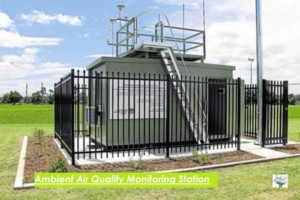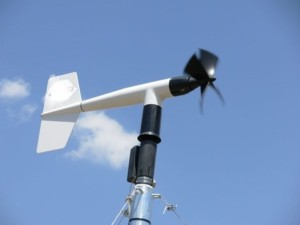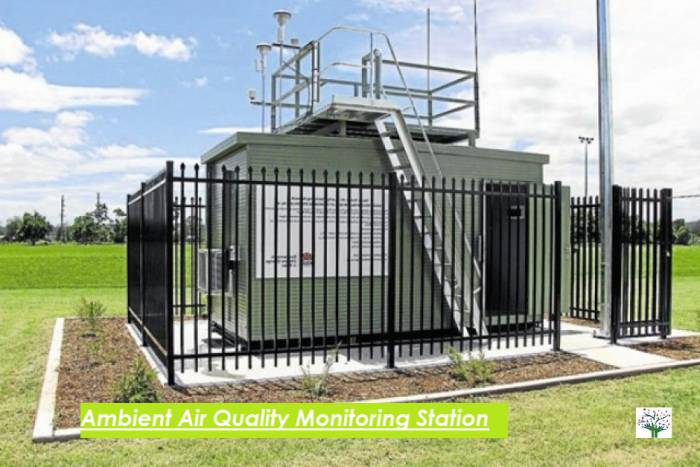Ambient Air Quality Monitoring Stations
Ambient air quality monitoring stations measure real time and peak concentration levels of dangerous pollutants in air.

Industrial and vehicular emissions along with other anthropogenic activities release air pollutants in the atmosphere across Indian cities. It is important to monitor them and keep them under control in order to prevent risk to human health and protect the survival of other living organisms.
Air Quality Monitoring Stations in India
Centre of Pollution Control Board (CPCB) initiated a nationwide ambient air quality monitoring program called national air quality monitoring program (NAQMP) which comprises of 342 monitoring stations all over 127 Indian cities/towns located in 26 states and 4 union territories of the country. National Air Quality Monitoring Program (NAQMP) started in India in 1984-85 at Agra and Anpara with 7 Stations.
Below are the objectives of the N.A.M.P.
- To determine the current status and trends of ambient air quality
- To examine if the prescribed are maintained or not
- To identify the cities that do not abide by the standards
- To gain knowledge and an insight required for developing preventive and corrective measures
- To understand the natural cleansing process undergoing in the environment through various processes such as pollution dilution, dispersion, wind based movement, dry deposition, precipitation and chemical transformation of the pollutants released.
NAQMP focuses on four air pollutants for regular monitoring at all the stations:
- Sulphur dioxide (SO2)
- Nitrogen oxides (NOx)
- Suspended particulate matter (SPM)
- Respirable suspended matter (PM10)
NAQM also considers geographical parameters while conducting measurements such as:
- Wind speed
- Wind direction
- Relative humidity
- Temperature
is performed for 24 hours which includes 4 hours of gaseous pollutants sampling and 8 hours of PM sampling, repeated twice a week to yield 104 observations in a year.
Read more for ambient air quality monitoring procedure
Importance of Ambient Air Quality Monitoring stations AAQMS
Ambient air quality monitoring stations help in examining the effectiveness of prescribed standards and assess the quality of life. Depending upon the conditions, measures can be implemented to maintain the ambient air quality standards.
Air Quality Monitoring Stations in a City
The number of stations installed in a city is decided based upon the records of sources of air pollution and emission and the number may vary depending on factors such as the distribution of pollutants, data needed for monitoring, pollutants examined and the area population. In 1977, the World Health Organization (WHO) provided a set of guidelines on the location of monitoring stations.
Parameters influencing site selection for AAQM Station
The parameters influencing site selections for ambient air quality monitoring are sites which indicate possibility or traces of air pollution such as industrial areas, cities and traffic junctions.
Measurements from different cities allow a comparison and help to observe a trend in the patterns of air quality at various metropolitan locations. Factors such as long term site availability, easy access to the site during a year of conducting measurements, sufficient supply of water, electricity and telephone connection, and safe and protected site from adverse weather conditions determine the suitability of a site for the establishment of air quality monitoring stations. Since geographical parameters influence air quality measurements, they are measured during AAQM as well.
Learn More about New Emerging Trends in Air Quality Testing
Evaluation of air pollutants
Below are the parameters which can be recorded by AAQM station and respective sensor to measure air quality:
- The velocity of air is measured by an anemometer
- Wind direction is measured by wind vane
- Rainfall and precipitation by precipitation gauge or rain gauge
- Temperature by thermometer
- Humidity dry and wet bulb hygrometers
- Humidity of air by sling psychrometers
- Mixing height by SODAR

SO2 and nitrogen dioxide (NO2) are analyzed by wet chemical method which is easy to use in India. is used for measuring particulate matter and respirable particulate matter sample for RSPM in India.
The measurements of ozone, lead, CO are performed by laboratory methods. Field and laboratory measurements are conducted by experts (That’s us!) who ensure maintenance of quality control, and the data collected is handled and analyzed appropriated along with application of corrections wherever necessary.
Learn more about Ozone Monitoring
The data obtained using AAQM stations is utilized by CPCB to examine the nationwide status of air pollutants.
Also read more about VOC Monitoring
Benefits for Air Quality Monitoring Stations
It has been observed that SO2 and NO2 levels in residential areas of all the cities abide by the prescribed National Ambient Air Quality Standards (NAAQS). However, a decreasing trend has been found in the SO2 levels in some cities including Delhi and Lucknow. The RSPM levels have been discovered to exceed the prescribed NAAQS in residential areas of many cities displaying fluctuating trends in the values recorded.
There can be high levels of carbon monoxide (CO) in Delhi due to an increase in the number of vehicles per person, but despite an increase in the vehicular population, CO levels in Delhi have reduced during the past years. This can be attributed to the implementation of measures such as conversion of three wheelers of CNG in Delhi.
Karnataka State Pollution Control Board has installed and commissioned two Continuous Ambient Air Quality Monitoring Stations (CAAQMS), one at City Railway Station, Bangalore and another at Nisarga Bhavan, Saneguruvanahalli in Bangalore. Both the stations operate for 24 hours throughout the year and the data recovered is sent to the CPCB.
Air Quality Monitoring Station Price
According to MPCB, manual monitors cost around Rs. 8 lakhs per year per station and continuous station costs around 1.5 crore per year per station. Some times individual researchers also can purchases Air quality monitoring stations from 25k to 3 lacs.
As per recent news MPCB and IIT-Kanpur has started the process to install 15 real time Air Quality Monitoring Stations, 10 in Mumbai and one each in Navi Mumbai, Thane, Kalyan, Vasai-Virar and Dombivali.
Air Quality Monitoring Stations Map
If you want to view current status of Air Quality Monitoring Stations on map and air quality in their location there are multiple websites which shows that:
- https://waqi.info/
- https://aqicn.org/map/india/
- https://www.aqi.in/
- http://safar.tropmet.res.in/
- https://www.iqair.com/in-en/india
Due to availability of air quality data, people can keep track on air quality and take measures in case air quality worsen.
Compact Air Quality Monitoring Station
Compact air quality monitoring station is the necessity of the time. So initially Air quality monitoring stations used to be very big but recently due to technological advancement their size has reduced significantly.
in Recent years Compact Air Quality Monitoring Stations can fit in small box and their function is to track and monitor more than 10-20 pollutants gases, Particulate and Environmental data. They can also send data real time to servers wirelessly along with their locations through GPS. Compact air quality monitoring stations have played very important role in making understand of importance of environment to Government, Transport Authorities, Industries, Air quality consultants, Researchers and Schools, etc.
Perfect Pollucon Services offer Services in Air Quality Monitoring/ Testing, Stack Emissions Monitoring, Indoor and Outdoor Air Quality Monitoring to various companies. Call us now for More information.



Hi,
Really loved your article. It was well thought out. I am planning on starting a manufacturing unit for ferro alloy and we are told that this product creates a lot of air pollution. I would like to know if there are any ways we can control or reduce the pollution so that the neighboring areas are not affected.
Looking forward to your response.
Sagar